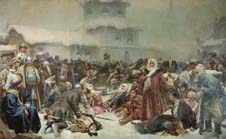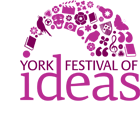From the Duchy of Muscovy to the Capital of All Russia
Dr Kashina Elena

- Friday 13 June 2014, 5.00PM to 6.00pm
- Free admission
Booking required - Berrick Saul Building, University of York (map|getting to campus)
Event details
![]()
Ivan III and Ivan IV were the two rulers during whose reign Moscow completed a transition from the capital of a principality to that of a centralised state.
Ivan III (1462 – 1505), the Grand Prince of Muscovy’s enormous achievement was turning ‘a Duchy on the outskirts of Europe into a vast Empire’, a change in status which necessitated, among other things, a new architecture befitting the new diplomatic situation, that would mirror the lineage, kinship and historic roots of the state and the sovereign, as well as demonstrate the sovereign’s command of contemporary cosmopolitan knowledge. This talk shall consider the ensemble of the Moscow Kremlin which emerged during the reign of the Ivan III to reveal it firstly, as an intercultural complex, and secondly, as a palazzo in fortezza whose distinctive features enabled a harmonious conjunction of palatial residence and military defence.
Following a period of strife in the governance of the country, which resulted from inter-fighting amid aristocratic families for prevalence, Ivan IV (1547-1584) was crowned Tsar of All Russia, making him Russia’s first officially crowned Tsar. Conferring the title had the purpose of re-consolidating the country, while the emergence of a Tsar in Russia held enormous implications internationally.
In this talk, historian Elena Kashina, will discuss the establishment of trade and diplomatic relations between Muscovy and Britain during the reign of Ivan IV, and look at the British Ambassadorial gifts in the collection of the Kremlin’s Armoury Chamber (a repository of ancient state insignia, antiquities and objects d’art from the Tsar and Imperial households).
About the speaker:
Dr Elena Kashina studied for her MPhil in Mediaeval Viking and Scandinavian Studies at the University of Oslo, following an award of a scholarship by the Research Council of Norway and gained her PhD in the History of Art at Leeds in 2007. Her scholarly interests include changes of traditional iconographies in sixteenth-century Russia, in their political and cultural context, and the history of artistic patronage, with an emphasis on the nineteenth and twentieth centuries. Her current research focuses on contributing to the edited collection on Representing the Past in the Nineteenth Century, to be published by Ashgate in 2015.
Accessibility
![]()
Wheelchair accessible
Tickets
You may also like...
This event is part of the Empire and Trade festival theme. Also in this theme:

